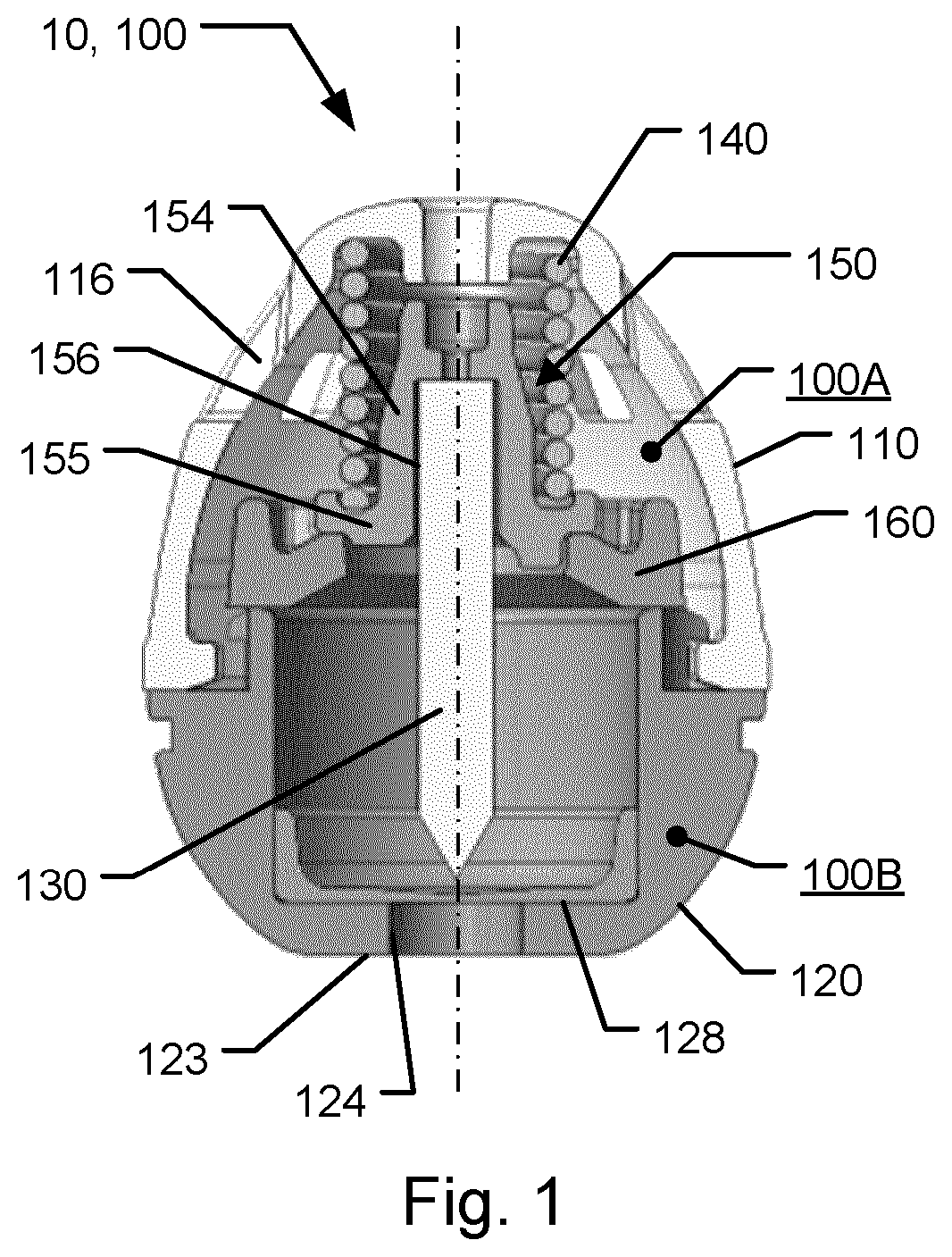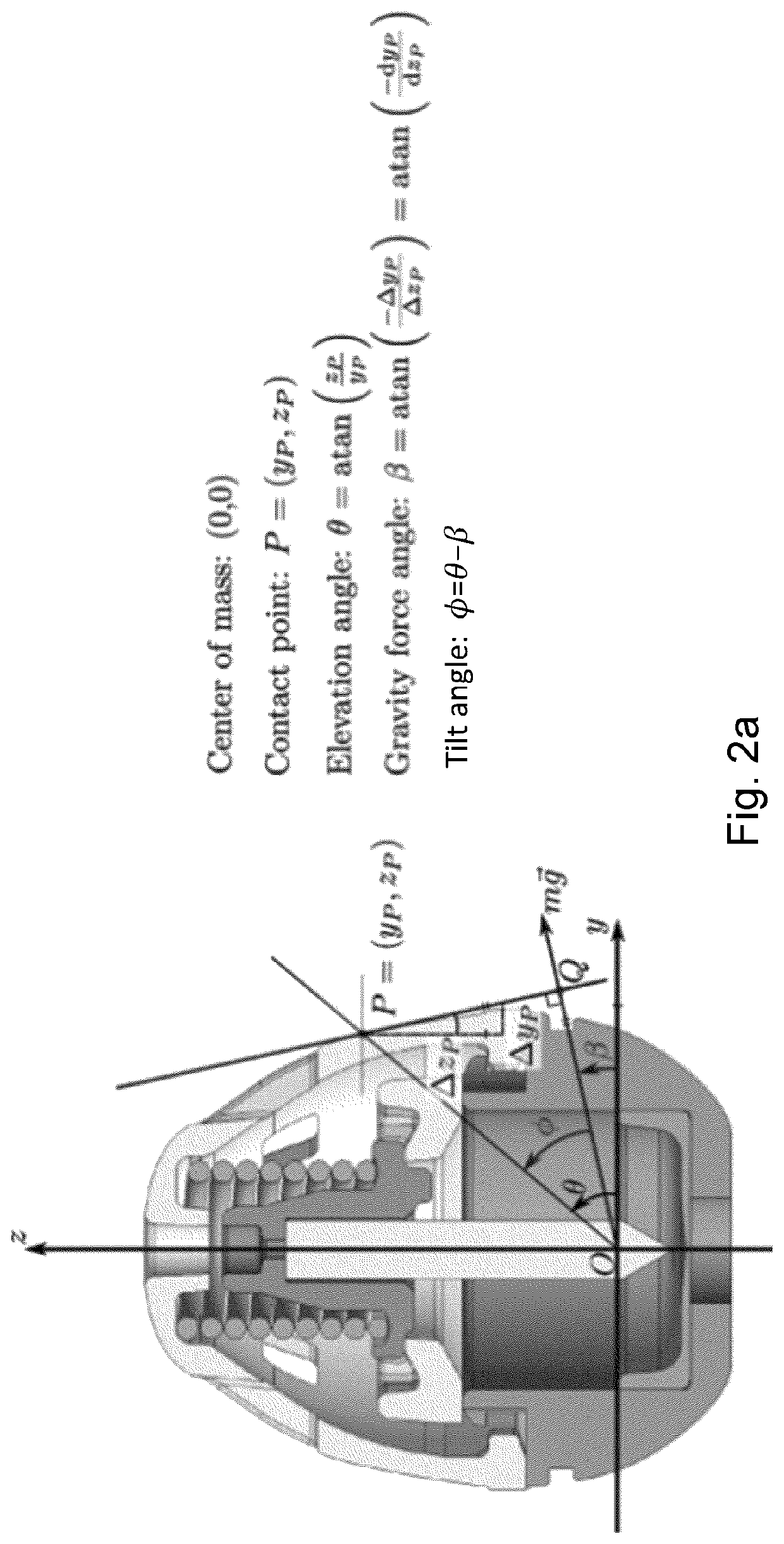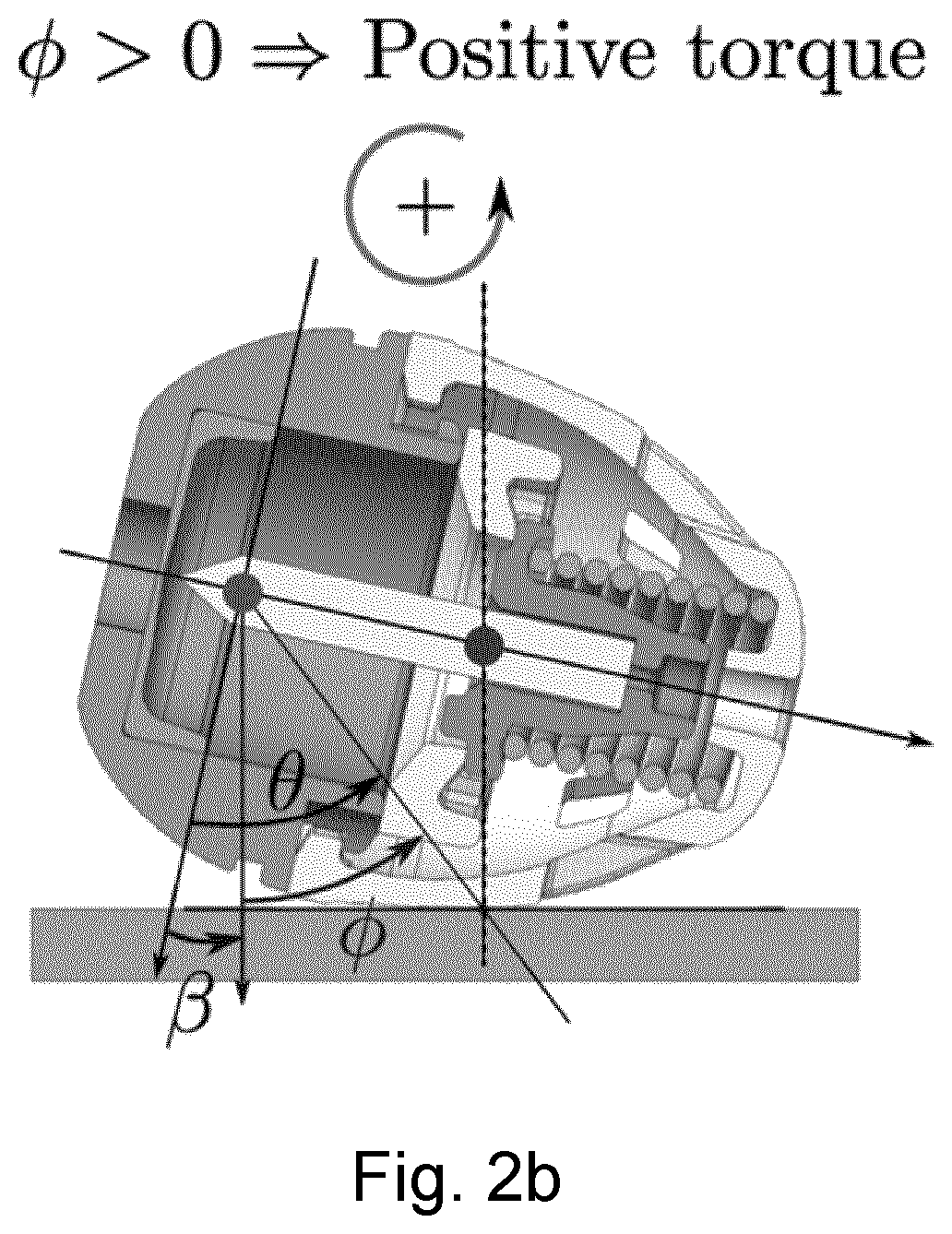Capsule device having improved self-righting ability
a self-righting ability and capsule technology, applied in the field of capsule devices having improved self-righting ability, can solve the problems of limiting the window of opportunity for drug release, difficult to realise solutions, and insufficient capsule size in many applications
- Summary
- Abstract
- Description
- Claims
- Application Information
AI Technical Summary
Benefits of technology
Problems solved by technology
Method used
Image
Examples
example 1
Simplified Spherical Device
[0124]For this case, the device is considered locally to be spherical with radius R, see FIG. 16.
[0125]Forces[0126]Gravity force: Fgrav=—mg ey [0127]Friction force: Ffric=—,gμex
[0128]Torques (around the center of volume, marked by the black cross)[0129]Gravity torque: τgrav=dgrav Fgrav=1 / 2R cos(α) mg[0130]Friction force: τfric=—dfric Ffric=—R mgμ
[0131]Total torque must be positive to ensure self-righting:
τtot=τgrav+τfric>0⇒μ<h cos(α)dfric⇒μ<12R cos(α)R=12cos(α)
[0132]For the center of mass, we observe that many of the proposed self-orienting capsule devices have a center of mass similar (or lower even) to that of 1 / 2R from the center of mass, so here h=1 / 2R, and α=60°, and for the friction force we have dfric=R. The critical coefficient becomes
μc=12R cos(60°)R=0.25.
[0133]Hence, based on these calculations, in order to ensure that the spherical device according to Example 1 perform slipping movement, the surface properties of the ex...
example 2
Self-Righting Capsule Device, Second Embodiment
[0134]For the second embodiment self-righting capsule device 200 described in connection with FIGS. 6a, 6b and 6c we have the following conditions:[0135]h=3.6 mm, α=42° and dfric=7.3 mm
μ<3.6 mm cos(42)7.3 mm=0.37⇒μc=0.37
[0136]Hence, based on this design, in order to ensure that the device according to Example 2 perform slipping movement, the surface properties of the exterior surface touching the tissue should have a coefficient of friction below 0.37 and ideally even lower.
example 3
Self-Righting Capsule Device, Third Embodiment
[0137]For the third embodiment self-righting capsule device 300 described in connection with FIGS. 7a, 7b and 7c we have the following conditions:[0138]h=3.4 mm, α=56° and dfric=6.6 mm
μ<3.4 mm cos(56°)6.6 mm=0.29⇒μc=0.29
[0139]Hence, based on this design, in order to ensure that the device according to Example 3 perform slipping movement, the surface properties of the exterior surface touching the tissue should have a coefficient of friction below 0.29 and ideally even lower.
END OF EXAMPLES
[0140]Turning now to FIGS. 9a and 9b a fourth embodiment of an ingestible self-righting capsule device 400 is shown. Device 400 comprises a first portion 100A having an average density, a second portion 100B having an average density different from the average density of the first portion 100A. The capsule device 400 accommodates a payload portion 130 for carrying an agent for release internally of a subject user that ingests the article. In...
PUM
 Login to View More
Login to View More Abstract
Description
Claims
Application Information
 Login to View More
Login to View More - R&D
- Intellectual Property
- Life Sciences
- Materials
- Tech Scout
- Unparalleled Data Quality
- Higher Quality Content
- 60% Fewer Hallucinations
Browse by: Latest US Patents, China's latest patents, Technical Efficacy Thesaurus, Application Domain, Technology Topic, Popular Technical Reports.
© 2025 PatSnap. All rights reserved.Legal|Privacy policy|Modern Slavery Act Transparency Statement|Sitemap|About US| Contact US: help@patsnap.com



